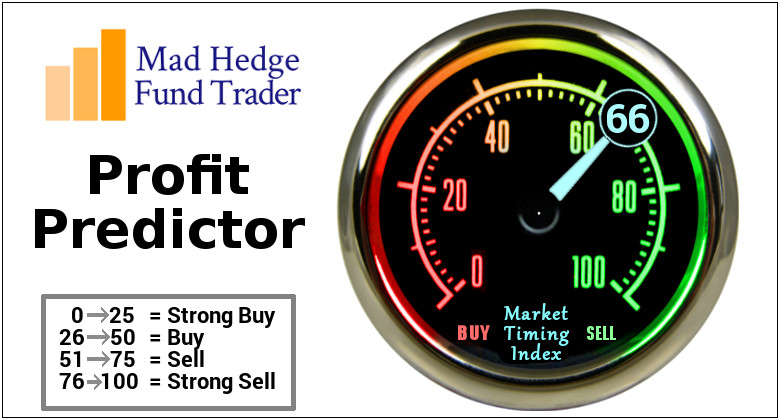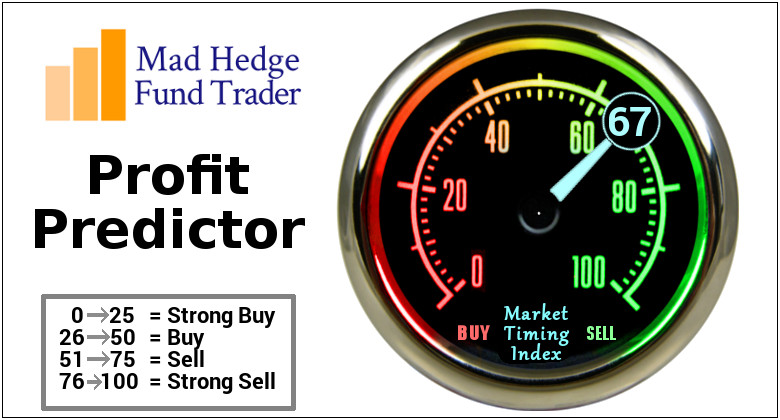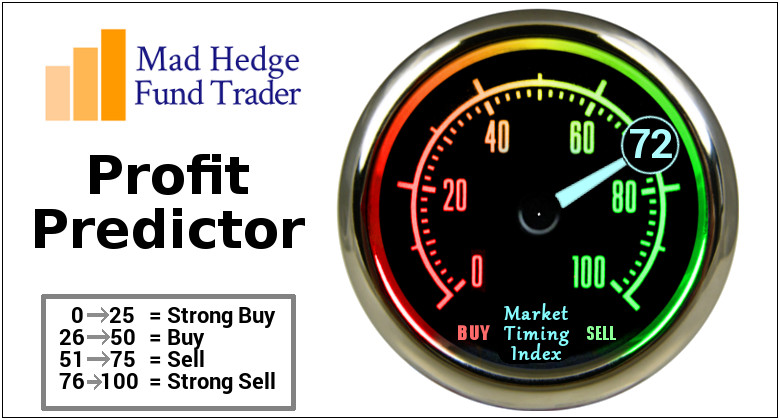"This is very bullish for markets. It's bullish for markets intermediate term. Before, I thought we were in the seventh inning of a four-year bull market. Two waiters just came in and delivered another punch bowl. We're going into extra innings, baby," said Stanley Druckenmiller formerly of hedge fund Duquesne Capital Management, about the Fed's decision not to taper.
Global Market Comments
July 31, 2018
Fiat Lux
Featured Trade:
(LAST CHANCE TO ATTEND THE FRIDAY, AUGUST 3
AMSTERDAM, THE NETHERLANDS GLOBAL STRATEGY DINNER),
(THE INSIDER'S VIEW ON THE FUTURE OF TECHNOLOGY),
(AMZN), (GOOG), (DELL), (MSFT), (EBAY),
(MY DATE WITH HITLER'S GIRLFRIEND)

Come join John Thomas at the Mad Hedge Fund Trader's Global Strategy Dinner, which I will be conducting in Amsterdam, The Netherlands, on Friday, August 3, 2018 at 7:00 PM. A three-course dinner will be followed by an extended question-and-answer period.
I'll be giving you my up-to-date view on stocks, bonds, foreign currencies, commodities, precious metals, energy, and real estate. And to keep you in suspense, I'll be throwing a few surprises out there, too. Tickets are available for $229.
The dinner will be held at a downtown Amsterdam hotel near The Dam, and the location will be on the "Thank You" screen after your purchase.
I look forward to meeting you and thank you for supporting my research.
To purchase tickets, please click here.

Global Market Comments
July 30, 2018
Fiat Lux
Featured Trade:
(THE MARKET OUTLOOK FOR THE WEEK AHEAD,
or POURING GASOLINE ON THE FIRE),
(MSFT), (AMZN), (FB), (NFLX), (TWTR),
(TESTIMONIAL)
Pour gasoline on a fire and you get a reaction. It's a simple matter of physics. That is the natural result of hitting the economy with tax cuts, fiscal stimulus, and low interest rates all at once. But at what price?
Of course, the headline number of the week was the first read on Q2 GDP growth, which came in at a strong 4.1%, the hottest number in four years. What was one of the biggest contributors? Soybean sales, as buyers rushed to beat the imposition of retaliatory Chinese tariffs. Consumers also hit the stores hard, spending their rising by a robust 4%.
The big question now is how much of this is sustainable? The answer is probably not much, which leaves investors with the queasy feeling that by coming in now they risk buying the absolute peak in the stock market. By temporarily pulling forward so much growth you may be creating a growth hole in Q3. So better mark your calendars now.
Q2 almost always delivers a string rebound from a usually weak Q1. The tax cuts delivered a one-time-only boost. But the investment spending that the administration had hoped for hasn't materialized, with a disproportionate portion of corporate profits going into share buybacks instead. Inventories are rising sharply, which is always bad.
We'll know for sure in a year when a recession will most likely begin. And remember, this extra growth is at the expense of an increase in the national debt by 10%, from $21 trillion to $23 trillion. And that is definitely NOT sustainable, but everyone in the world seems to have forgotten that, except me!
Interestingly, the report placed the current inflation rate dead on the Fed's target at 2.0%. That is a guarantee that any continued economic strength will be offset by rising interest rates.
The Facebook (FB) earnings highlighted the poor risk/reward of buying tech stocks at these elevated levels. Facebook shares plunged by 20% on their earnings announcement, creating the largest single day loss of market capitalization in history, some $120 billion. It was obviously a "kitchen sink" quarter.
If you get an earnings beat, as you did with Microsoft (MSFT) and Amazon (AMZN), you get a 2-, 3-, 4% pop in the stock price. If you disappoint, as did Facebook, Netflix (NFLX), and Twitter (TWTR), they crater by 10% to 20%. It is all typical end-of-cycle price action.
On the other hand, Amazon knocked the cover off the ball with its earnings, which came in at double analyst forecasts. The company is about to reach my end 2018 target of $2,000 a share. That is double the February lows.
Amazon Web Services delivered a stunning $6.1 billion quarterly revenue, up 49% YOY. Advertising is now becoming a major factor, as the company challenges Google (GOOG) and Facebook. For more on the longer-term prospects of Jeff Bezos's incredible company please see the special report that I published yesterday.
Bonds (TLT) continued their moribund price action, barely eking out a gain in yields to 2.97%. Either they are already discounting the next recession, are flooded with cash from a global QE hangover, or are getting a nice flight to safety bid brought on by multiple trade wars. Most likely it is all three.
Better to opine from the sidelines than to attempt to trade in the least volatile bond market conditions in 30 years.
As for gold, it continues to be a trader's worst nightmare as it plums new 2018 lows. Clearly, globally rising interest rates are not of what bull markets in gold are made. It doesn't help that Venezuela continues to hammer the market by liquidating its entire gold reserves on its way to national bankruptcy. Whenever distress liquidations take place, they are bad for everyone, not just the seller. Competition from crypto currencies for the speculative dollar doesn't help either.
As I have been sitting on top of an Alp contemplating the future and out of the markets, my 2018 year-to-date performance remains unchanged at an eye-popping 24.82% and my 8 1/2- year return sits at 301.29%. The Averaged Annualized Return stands at 35.10%. The more narrowly focused Mad Hedge Technology Fund Trade Alert performance is annualizing now at an impressive 38.69%.
It will be a big week on the data front, with an FOMC Meeting and an onslaught of jobs data.
On Monday, July 30 at 10:00 AM we obtain the June Pending Home Sales.
On Tuesday, July 31 at 9:00 AM EST, then we get the May S&P CoreLogic Case-Shiller National Home Price Index.
On Wednesday, August 1 at 2:00 PM, the Fed announces its decision on interest rates. Given the hot 4.1% Q2 GDP report, another 25-basis point rate rise is entirely possible.
Thursday, August 2, leads with the Weekly Jobless Claims at 8:30 AM EST, which saw a rise of 9,000 last week to 219,000.
On Friday, August 3 at 9:15 AM EST we get the July Nonfarm Payroll Report. Then the Baker Hughes Rig Count is announced at 1:00 PM EST.
As for me, the highlight of the week was being handed the keys to the City of Zermatt by the mayor for visiting for the 50th year. Yes, I camped out here at the Youth Hostel in 1968. Also, with the honor came a Swiss Army knife with my name on it and a beautiful 10-pound coffee table book outlining the route I usually take to the Matterhorn summit.
I am now contemplating my return to the U.S., which is always hellish. It will require two trains (to Visp and Geneva), two flights (to Amsterdam and San Francisco), the last one of which lasts a punishing 10 1/2 hours. Then there is the eight hours of jet lag to deal with when I get home. So, I'll be getting up at 2:00 AM for a while. During those days I will be posting some of my favorite pieces from the past.
Still, to see the 14,692-foot Matterhorn from where I am sitting in the brilliant sunshine in all its glory, listening to an Alpine river rushing outside my window, and watching the swaying pines, it is all worth it.
Good luck and good trading.
Global Market Comments
July 27, 2018
Fiat Lux
Featured Trade:
(LAST CHANCE TO ATTEND THE FRIDAY, AUGUST 3, 2018,
AMSTERDAM, THE NETHERLANDS GLOBAL STRATEGY DINNER),
(STOCKS TO BUY ON THE OUTBREAK OF TRADE PEACE),
(QQQ), (SPY), (SOYB), (CORN), (WEAT), (CAT),
(DE), (BA), (QCOM), (MU), (LRCX), (CRUS),
(ORIENT EXPRESS PART II, or REPORT FROM VENICE)
So, how will the trade war end? It could be the crucial trading call of 2018.
"That which can't continue, won't," I paraphrase the noted economist Herbert Stein. I think that logic neatly applies to our global trade wars today.
In 1970, some 25% of world GDP was accounted for by international trade. Today it is 52%. Germany has been the powerhouse, with trade growing from 25% to 80%, largely through exploding auto exports. Trade growth in the U.K. has been pitiful as the old colonial ties loosened, improving only from 40% of GDP to 52%.
In the U.S., trade has grown from 10% to 25% of GDP during this time. It is far lower than the rest of the G7 nations because of the massive size of its domestic economy.
Still, placing restraints on 25% of U.S. GDP, or about $5 trillion, is quite a big hit. Think an imminent recession, quite possible a severe one. The $13 billion in subsidies offered the agriculture sector is but a drop in the bucket. It would be like killing off the goose that laid the golden egg.
Trump has a weak hand, which is growing weaker by the day. It is just a matter of time before he folds. Not to do so would entirely wipe out the benefits of the December tax package, yet still leave the U.S. government with $2 trillion in new debt. It is a perfect money destruction machine.
My bet is that Trump will claim victory at some point soon, regardless of what transpires on the negotiation front. Take the trade war away, and stocks will immediately jump 10%. That's what the stock market thinks, with NASDAQ (QQQ) at an all-time high, and the S&P 500 (SPY) just short of one. Stocks are trading over the medium term as if Donald Trump doesn't exist.
Which stocks should you buy when trade peace breaks out? Buy those that have suffered the most. The ags have to be at the top of your list, such as Soybeans (SOYB), Corn (CORN), and Wheat (WEAT), the worst hit. The old industrials such as Caterpillar (CAT), John Deere (DE), and Boeing (BA) also have to be a priority.
In the technology area you have to rotate out of the FANGs and into chip stocks, the worst performers of the sector this year. Perhaps this is what the market is shouting at us with the horrific one-day decline in Facebook (FB) yesterday. China relies on the U.S. for 80% of its chips and all of its high-end graphics cards.
China's canceling of the QUALCOM (QCOM) takeover of its NXP Semiconductors shows to what extent it is willing to retaliate in the tech area. Chip stocks to buy for the rebound should include Micron Technology (MU), Cirrus Logic (CRUS), and Lam Research (LRCX).
Even if the trade war ends tomorrow, business conditions will never be the same. Confidence in American reliability will never completely recover. Sure, Trump will be gone in 2 1/2 years. But what if he is replaced by someone worse? Trading with the United States now incurs a level of political risk not seen since the War of 1812, when Washington burned.
But no trade war is certainly better than a trade war if you are a trader or investor.
Telling the Captain How to Steer the Ship
If you ever need someone to owe you a big favor, make sure it is the world's best hotel.
That is what I discovered when I checked into the legendary Cipriani Hotel in Venice, Italy. I had booked its cheapest room at $1,500 a day. Due to a screwup on the reservations, I learned to my great distress that I could stay only one night.
The good news was that the hotel graciously offered me a free upgrade to its presidential suite, a two-bedroom palace stuffed with 18th century antiques, exquisite Murano glass chandeliers, and its own private pier and driver.
All of this was a bargain for $12,000 a day. Would you care for a $1,000 complimentary dinner for two? And, oh, seniore, could we please cover the cost of the rest of your entire stay in Venice at the Hotel Danieli, a 16th century palace that was the city's other trophy hotel? Total value of these freebies: $18,000.
Thank you Orient Express!
Thus, my stay in Venice was off to a spectacular and serendipitous start. They say, "See Venice, and die." That's because so many drop dead when they get the bill.
Feel like a continental breakfast for two with cappuccino for $100? It was all worth it, as breakfast on the roof of the Danieli was one of those once-in-a-lifetime, bucket-list-type experiences.
Watercraft churned by in the hundreds, including ancient gondolas, wheezing, smoky old vaporettos, water taxis, inflatable dinghies, and even sailboats. I fought the seagulls for the butter patties, which if not eaten immediately, melted in the heat.
Squeezing my way through the crowded alleyways of this enchanted Renaissance city, I caught a snapshot of the global economy.
The only Americans I saw were either young hedge fund traders wearing Rolex watches, or technology moguls cashing in this year's bubblicious prices. The rest were clearly scared off by the price tag.
The Japanese were still there in force. But the groups included many single spinster women in their 30s and 40s escorting their parents, unable to get married in an economy that has shown almost no growth in two decades.
They were joined by large tour groups from the up-and-coming economies of China and Brazil, their leaders barking out orders and leading the charge with large umbrellas or flags.
The super yachts of the Russian oligarchs lined the waterfront, conspicuous with their obscure Caribbean flags of convenience.
Extended Arab families that included two, three, or even four wives, and uncountable children in designer togs could be spotted in the best restaurants, the women laboring in their burkas in the 95-degree humid heat. It seems that oil even at $75 a barrel will cover every bill and excuse any excess.
I have been coming here since 1968, and am never disappointed. I made my ritual stop by Harry's Bar for a champagne Bellini, and strolled past the American Express office where I used to pick up my mail during my wild and reckless, pre-Internet youth.
I made a pilgrimage to Quadracci's on the Piazza San Marco, where my grandfather used to sip espresso with another young ambulance driver named Ernest Hemingway during WWI. Family legend has it that Hemingway modeled his Italian driver friend on grandpa, who in the book Farewell to Arms gets killed.
That night, I had the concierge send a speedboat around to my room to take me across the lagoon to the Casino at the Lido. An Arab at my blackjack table was losing $50,000 a hand and sending out hugely negative vibes, so I moved.
I just wanted to let you know where the money for your $4 a gallon gasoline was going. As I was playing merely to see who was there, I gave my winnings to the dealer, who gave me a big grazie. It seems that Italians are lousy tippers.
On my way back, I stood in my powerboat alone, holding on to the cabin and racing across the water at 40 knots in the darkness, wearing my white dinner jacket and bow tie, the wind blowing through my hair, thinking life is good and feeling every inch the James Bond.
I better come up with some new trades to pay for all of this. I mentally prepared myself for my strategy luncheon the next week in Amsterdam.
To be continued.
"If you can't make yourself loved, make yourself feared," said Mayer Amschel Rothschild, founder of the banking dynasty.
Global Market Comments
July 26, 2018
Fiat Lux
AMAZON SPECIAL REPORT
Featured Trade:
(SO WHERE DID THOSE AMAZON EARNINGS REALLY COME FROM
AND WHERE ARE THEY GOING?),
(AMZN), (WMT)

Legal Disclaimer
There is a very high degree of risk involved in trading. Past results are not indicative of future returns. MadHedgeFundTrader.com and all individuals affiliated with this site assume no responsibilities for your trading and investment results. The indicators, strategies, columns, articles and all other features are for educational purposes only and should not be construed as investment advice. Information for futures trading observations are obtained from sources believed to be reliable, but we do not warrant its completeness or accuracy, or warrant any results from the use of the information. Your use of the trading observations is entirely at your own risk and it is your sole responsibility to evaluate the accuracy, completeness and usefulness of the information. You must assess the risk of any trade with your broker and make your own independent decisions regarding any securities mentioned herein. Affiliates of MadHedgeFundTrader.com may have a position or effect transactions in the securities described herein (or options thereon) and/or otherwise employ trading strategies that may be consistent or inconsistent with the provided strategies.





















